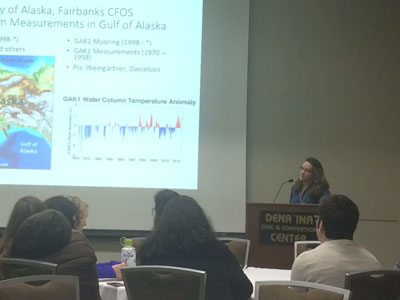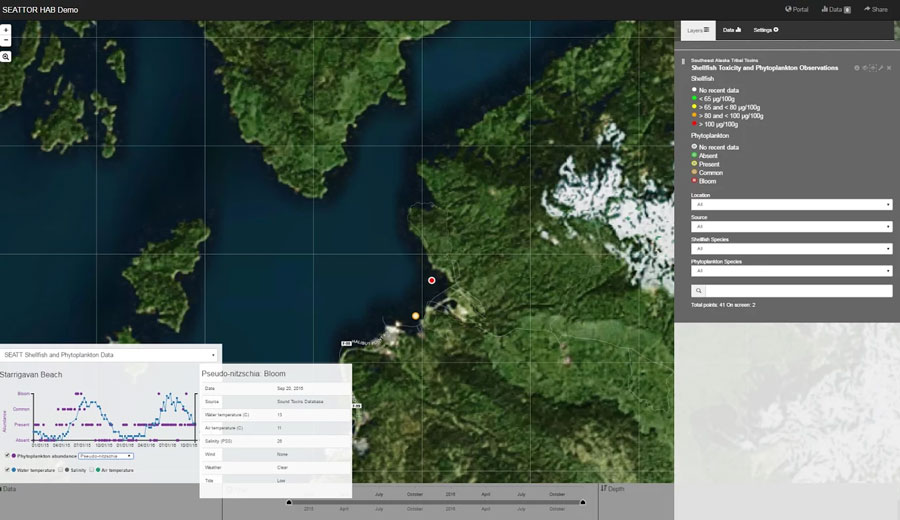
Axiom Data Science and the Alaska Ocean Observing System (AOOS) recently presented at the Alaska Sea Grant’s Harmful Algal Bloom workshop about platforms for phytoplankton and shellfish toxicity data sharing. Here is a presentation synopsis:
Ready access to phytoplankton abundance and shellfish toxicity data is critical to supporting rapid response capabilities for harmful algal blooms (HABs). The Alaska Ocean Observing System (AOOS), in partnership with Axiom Data Science, packages coastal and ocean observation data in meaningful ways to support stakeholder needs. AOOS is in the early stages of developing tools to inform decision-making about the impacts of HABs to humans and the environment in Alaska. Among those available to the Alaska HAB network, the Ocean Workspace is a web-based collaboration tool used to securely centralize scientific data and elect files to be published openly on public data portals. The Ocean Data Explorer and Gulf of Alaska portals provide public access to hundreds of data layers, allowing users to visualize and integrate different types of data from many sources. The Kachemak Bay Harmful Algal Bloom Information System(http://www.aoos.org/k-bay-hab/) includes information on current water temperatures in Kachemak Bay and how these temperatures may affect the development of HABs and resulting shellfish toxicity. Additionally, under development is a data collection and distribution system for phytoplankton and shellfish testing information in Southeast Alaska (via Southeast Alaska Tribal Ocean Research (SEATOR) and SoundToxins.org) that aims to give tribes, researchers, shellfish growers, and managers a data-driven resource for HAB warnings to inform selective harvesting of shellfish to reduce human health risk. This system may provide an important platform for serving the new Alaska HAB network’s statewide need for centralizing data and disseminating it in useful ways to managers and the public.
